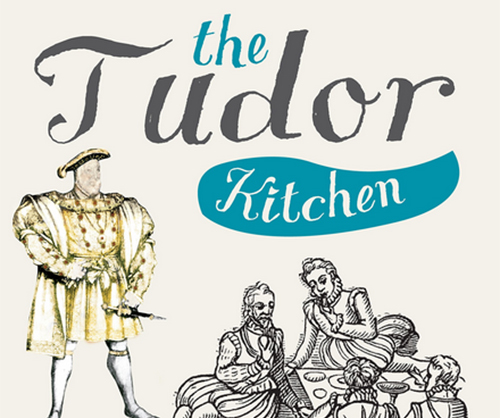The Tudor Kitchen. What the Tudors Ate and Drank
Review

The Tudor Kitchen. What the Tudors Ate and Drank, Terry Breverton, Amberley Publishing, 2015, hardback, 352 pp., £20.00, ISBN 9781445648743
Henry VIII’s most characteristic pose at the banquet table in so many screen representations of his reign is hungrily gnawing at a chicken leg before casting the bone casually over his shoulder. On the dust jacket blurb of this weighty tome the reader is invited to speculate which pies did Henry VIII gorge on to go from a 32 to a 54-inch waist? Or, moving closer to a link with an actual historical event, what was Elizabeth I’s first meal after the defeat of the Spanish Armada? This study offers a new history of the Tudor kitchen with over 500 ‘sumptuous – and more everyday – recipes enjoyed by rich and poor’ all taken from authentic contemporary sources. They encompass first courses, main courses, sided dishes, sweets, snacks, preserves, spices, sources and drinks. Additional topics also differentiate between Tudor, Medieval and Stuart recipe books and explore the Tudor diet, farming and table etiquette, confirming that the screen representation of Henry to which reference has already been made may not have conformed to ‘the courtly and genteel manner of eating’ observed at least by ‘the upper levels of society’.
There is a strong Welsh flavour permeating the book from an author who lives in the Teifi valley which is evident in many of the recipes, for example Bara Llechwan (Bakestone Bread) and in many of the venues where Tudor food is regularly on offer or on display to tourist visitors and hungry parties of schoolchildren at, for example Tudor merchants’ houses at Tenby or indeed Conway, where I have sampled it myself. And so the tradition of Tudor hospitality lives on, though not perhaps on the lavish scale reflected in Tudor court food purchases in just one year where no fewer than 8,200 sheep, 2,330 deer and 53 wild boar, plus countless birds such as ‘swan and cygnet, peacock, heron, capon, teal, gull and shoveler’. Quite apart from the possibilities for cross-curricular work on ornithology, but perhaps steering clear of the section headed ‘Dishes You May Not Wish to Cook or Eat or See’ which includes ‘Live Blackbird, Rabbit, Frog, Dog or Dwarf Pie’ there are opportunities, at a slightly more practical level, for example, to combine food technology with historical understanding.

